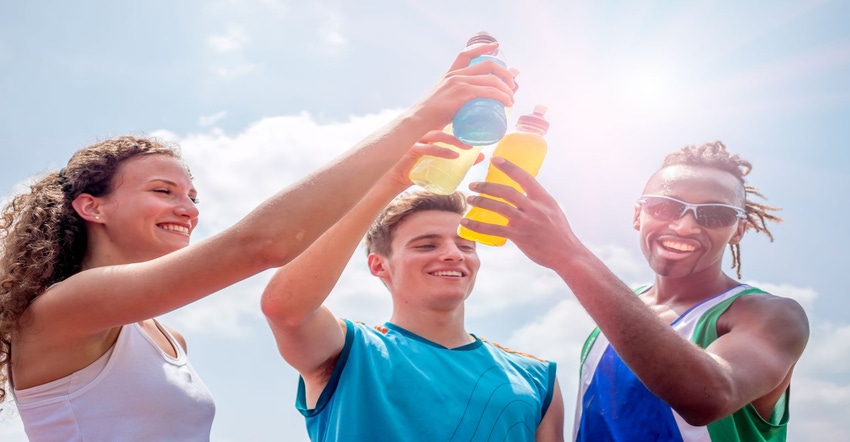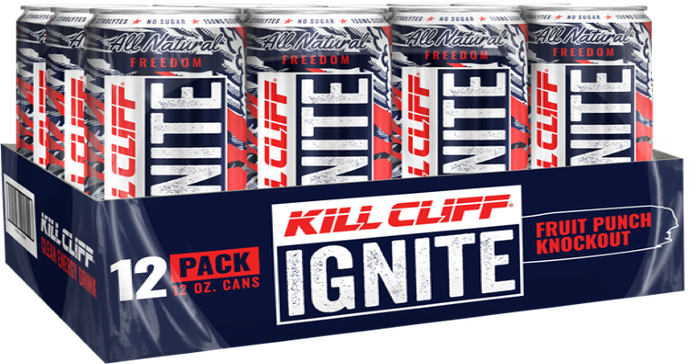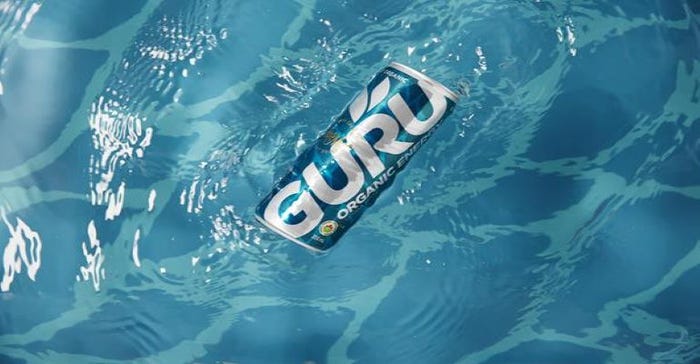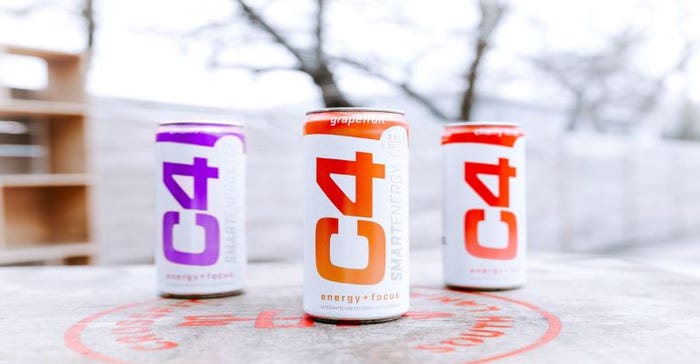Category insights: Sports drinks
Today's sports drink options are as varied as the athletes they serve thanks to improved ingredient and formulation technology.

This article is part of Food & Beverage Insider’s July Healthy Beverage theme that explores opportunities and innovation in the beverage sector. Throughout the month we will provide industry insight into growth categories, investigate novel clean ingredients and formulation strategies, address regulatory compliance and toast successes.
Athletes come in all different shapes and sizes, and because of that, they have different needs when it comes to supplementation. Some require ingredients like protein to build muscle; some may need energy-boosting ingredients for stamina and endurance. Some of today’s athletes are even competing virtually, requiring supplementation in the form of improved focus or eye health.
As the demands of athletes—which range from professionals to weekend warriors to really any consumer looking to stay active—continue to evolve, so too have the ways in which these consumers seek to ingest these performance-enhancing ingredients. In a survey conducted by MarketPlace in 2020, 63% of supplement consumers stated they preferred to get most of their nutrition through food and beverage.
This is where functional sports nutrition beverages come into play. Whether protein for muscle-building; vitamins, minerals and electrolytes for endurance; caffeine and other energy-boosting ingredients for that final push; or nootropics to ensure one’s mind is as sharp as one’s body, sports nutrition beverages have a lot to offer the increasingly diverse sports market.
Eye on the market
The global sports nutrition market, which includes both food and beverage as well as supplements, was valued at US$10.7 billion in 2020 by Grand View Research and is expected to rise at a 10.9% compound annual growth rate (CAGR) through 2028. And, while supplements still make up the lion’s share of the market (more than 80%), the market researcher did note food and beverages were the fastest-growing segment in the market.
When it comes to the sports drink market specifically, Fortune Business Insights is especially bullish, predicting the global sports drink market to climb to more than $30 billion by 2026. “The rising emphasis on improving [the] body’s performance and endurance level by athletes will fuel demand for sports drinks, which in turn will boost the sports drink market share,” the firm noted in its report.
Driving success in the sports drink market is the sheer number of ingredients available for formulators to experiment with. Nearly any added benefit from a fortified beverage—energy, relaxation, focus, endurance, muscle-building, inflammation control, the list goes on—can find use in a sports nutrition formulation.
Protein still king
Protein tops the list of sports drink ingredients, both in terms of use and consumer understanding. MarketsandMarkets reported protein now represents nearly 30% of all functional ingredient use in beverages.
Grand View Research estimated the global protein ingredients market would reach more than $85 billion by 2028, growing at a 10.5% CAGR from 2021-2028. “The market is expected to witness significant growth over the forecast period owing to increasing consumer awareness regarding maintaining a healthy diet and leading an active lifestyle,” the report stated. “In addition, the growing popularity of adopting a high protein diet as a part of weight reduction is expected to propel the demand for protein ingredients.”
Kerry, based on proprietary data, reached similar conclusions that protein supplementation is no longer just for weightlifting buffs, noting, “mainstream consumers purchase protein products to maintain a healthy diet and lifestyle first and foremost, followed by the goals of weight management and supporting muscle health.”
Another factor working in its favor, according to Grand View, is the increasing use of protein among female consumers. Grand View, in its report, pointed toward changing fitness goals among female consumers, which would lead to “ascending demand for protein ingredients among women owing to the prevalence of the ‘strong not skinny’ trend, as well as the rising popularity of resistance training among women.”
Protein, of course, comes in nearly as many forms as athletes themselves; long gone are the days when all protein was created equal. While animal-based protein is still in-demand, plant-based proteins from pea, hemp, soy, chickpea, almonds and other sources are quickly catching up as consumers—whether vegan/vegetarian or not—seek cleaner, more sustainable protein sources. In a recent look at evolving trends, Kerry identified canola, sunflower and flax as emerging ingredients in this space as well. These plant proteins, while notoriously more difficult to formulate with than animal-based proteins such as whey, benefit from wider consumer acceptance in terms of healthfulness; Kerry data indicated “more than two-thirds of consumers view protein from plant sources as ‘healthy’ compared to the 42% that take the same view of animal protein.”
Brain games
Whether one considers them “athletes” or not, e-gamers are an emerging target audience for sports nutrition drinks and have opened up a world of possibility when it comes to nootropics. E-gamers don’t need protein to build strong muscles or stamina to run further, faster and longer. What they do need, however, are ingredients to help build and maintain their minds.
“Although almost 50% of gaming products are energy drinks, there’s a lot of room for innovation,” said Alexandre Massumoto, marketing associate, Synergy Flavors Inc. “Gamers are looking for products that enhance focus, reaction, speed, cognitive function and mental toughness, and as gaming products rise in popularity, so does the market for nootropics.”
Rebecca Shurhay, marketing analyst, Flavorchem, mentioned several ingredients that fall into this emerging market, including L-theanine, lion’s mane mushroom (Hericium erinaceus) and adaptogens like ashwagandha (Withania somnifera) and holy basil (Ocimum tenuiflorum). And, of course, competitive video gamers aren’t the only ones who benefit from these kinds of ingredients. Shurhay mentioned a 355% increase, according to Google trends, in searches for “brain food” in 2020, highlighting the importance these benefits have for the population at large. Working at a computer all day, for instance, may not feel like running a marathon or lifting weights, but it does take its toll mentally as well as physically, and sports drinks are continuing to emerge that target these kinds of consumers.
Matter of taste
Of course, sports nutrition drinks present a hurdle their supplement brethren can often get aruond: flavor and appearance. Most people don’t expect a pill or capsule to taste good, but that has also played a role in consumers generally eschewing these formats in favor of food and drink. A sports beverage, on the other hand, absolutely must taste and look great to catch on. No matter how much protein, or how many vitamins and minerals, a drink contains, consumers won’t purchase it if it doesn’t also deliver on taste and appearance. The aforementioned Kerry study, for instance, found that over 70% of consumers ranked flavor and taste as the “most important” factor in a beverage purchase.
However, unlike many of the energy and sports drinks of yesteryear, brands can no longer lean heavily on sugar to cover up off-notes from functional ingredients, as many consumers continue to avoid it. Alternative sweeteners such as stevia, monk fruit, erythritol and allulose, in combination with flavor modulating molecules for enhanced sweetness and improved mouthfeel, bridge the divide, allowing for the inclusion of vitamins, minerals, and plant- and animal-based proteins without the oft-associated flavor issues such as bitterness and astringency.
Even if a sports drink tastes great and has effective ingredients to confer desired benefits, it also has to look good. Consumers shop with their eyes—especially if experimenting in a beverage aisle flooded with every color imaginable. Drinks with muddled, bland colors or obvious sedimentation and settling won’t hold up on shelf next to brighter, more visually appealing peers. Sometimes, a beverage’s appearance can even impact its performance. For example, a study published in Frontiers in Nutrition this year indicated a pink sports beverage improved performance more than a clear beverage—even when all other ingredients were identical, and even if the pink color did not relate to any flavor (2021;[4]:217). “An interesting and novel finding from the current study seems to combine the art of gastronomy with performance nutrition, as adding a pink colorant … enhanced feelings of pleasure, self-selected running speed and distance covered during a 30-minute run,” the researchers concluded.
In addition to ensuring a sports beverage looks good, it’s becoming increasingly imperative that the source of that color be natural as well. While not as vilified as artificial sweeteners, artificial colors are being phased out in favor of natural offerings. Ingredients like turmeric (Curcuma longa) for yellows and oranges, beta-carotene for reds, and various herbs and botanicals for greens should be the norm. And, much as pink sports drinks performed better than clear ones in the above study, other colors can convey messages about a beverage. Yellow or orange drinks can convey a theme of energy, while red and purple signal vitamins and antioxidants—even if the ingredient doing the coloring is in too small an amount to actually confer those benefits. ADM’s Colors From Nature range is but one example of natural colorants. According to Emina Goodman, senior director, colors, ADM, “our clear emulsion technology allows for transparency in beverages like sparkling waters and more, and makes it easier to add colors while preventing separation. Plus, our micronized technology provides bright and consistent shades in powdered beverages.”
Innovators, innovating
It’s one thing to know what makes a good sports beverage in 2021; it’s another entirely to put that knowledge to work and create an effective option for consumers.
Kill Cliff is a brand of “clean energy drinks” covering a variety of active consumer needs within its various lines. The brand’s Energize x Recover line comes in exciting flavors like Berry Legit Lemonade and Lemon Lime Lightning, and each 355 ml can is 20 calories or less and contains 45% daily reference value (DRV) riboflavin, 45% DRV niacin, 100% DRV vitamin B12 and 80% DRV pantothenic acid. Each flavor is also sweetened with stevia or erythritol and uses natural colors from turmeric, beta-carotene and fruit and vegetable extracts. Kill Cliff’s caffeinated offering, Kill Cliff Ignite, boasts up to 150 mg “clean” caffeine per can, in addition to the vitamins and minerals in its Energize x Recover line.

Koios is a brand of sports beverages aimed at the mind. The list of functional ingredients utilized by the brand includes medium-chain triglyceride (MCT) oil, lion’s mane mushroom, L-alpha glycerylphosphorylcholine (alpha-GPC), the adaptogen Siberian ginseng (Eleutherococcus senticosus), caffeine derived from green tea, L-theanine and L-tyrosine. With flavors like Peach Mango and Apricot Vanilla, these 12-oz. cans deliver on both taste and function while remaining low calorie (20 calories or fewer per can) and containing no sugar or artificial sweeteners.
GURU Organic Energy is taking advantage of the plant-based and general clean label trends with its line of energy drinks. The USDA Certified Organic drinks are formulated with ingredients like ginseng (Panax quinquefolius), matcha, guarana (Paullinia cupana) and echinacea (Echinacea purpurea), and each ingredient can be traced quickly and easily to its place of origin on the brand’s site. While cane sugar is included on the ingredient deck, stevia and monk fruit are also utilized to bring the sugar content to about 70% that of traditional energy drinks. The brand also offers GURU Lite for a lower-sugar option.

Nutrabolt, makers of C4 energy drinks, announced in May it would be unveiling a new line extension, C4 Smart Energy Natural Zero. Containing 150 mg caffeine derived from green tea, the line extension contains no sugar, artificial sweeteners or flavors and is zero-calorie. Each of the line’s three flavors—Blackberry, Cherry Lime and Grapefruit—also contain Cognizin, a patented citicoline ingredient that’s shown benefits in mental focus, attention and recall (Clin Interv Aging. 2006;1[3]:247-251).

Bottoms up
The trend toward cleaner, more natural sports drinks began well before the COVID-19 pandemic, and like much of the food and beverage landscape, that trend should only accelerate in the post-pandemic world. More natural and sustainable protein and energy sources—combined with equally natural colors, flavors and sweeteners—have transformed sports drinks, widening their appeal to an audience that, today, consists of nearly every kind of consumer.
To learn more about the trends shaping not just sports drinks but the beverage category as a whole, be sure to check out Food & Beverage Insider’s latest digital magazine, covering innovation and formulation across the healthy beverages market.
About the Author(s)
You May Also Like






